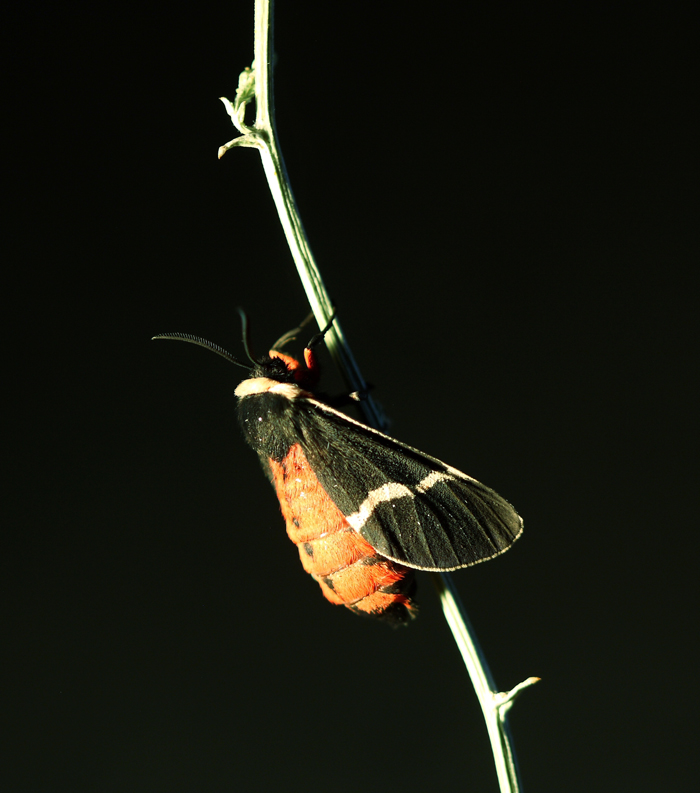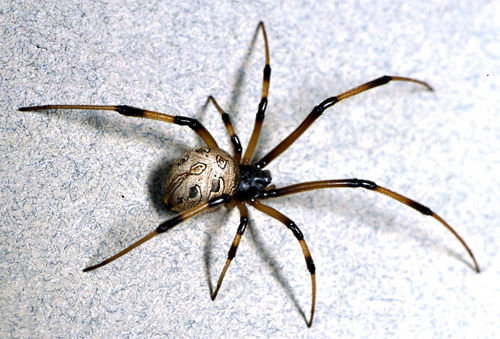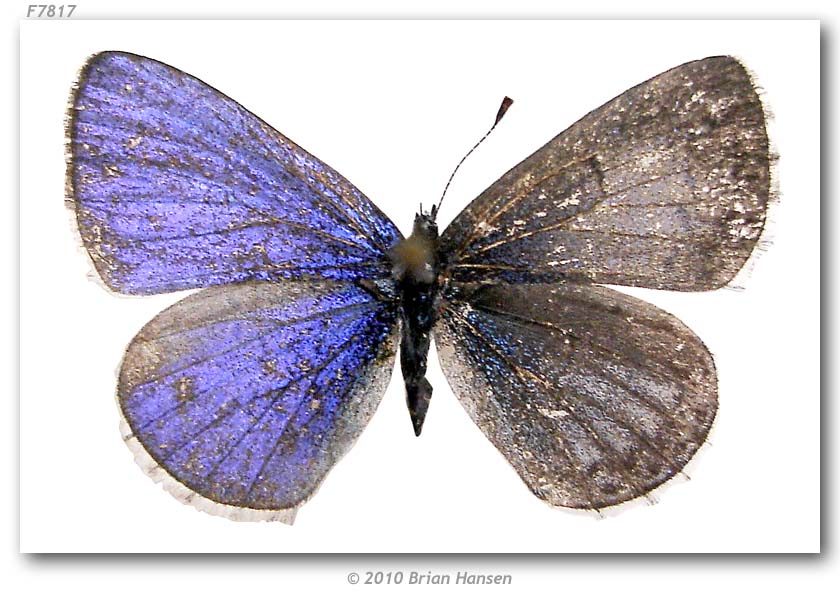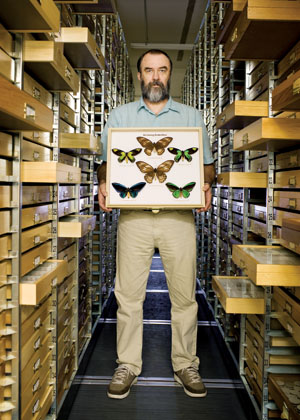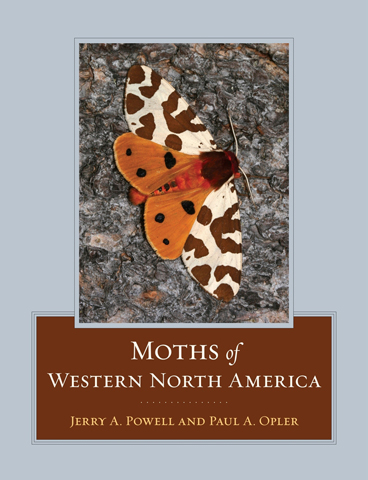Para a serie de cuestionarios que raramente se repiten, aquí tedes unha nova imaxe. Quen é esta polilla?
|
Para eses californianos que len, especialmente os do sur, Estade atentos a esta fermosa araña, Latrodectus geometricus – a viúva parda. Aracnólogos da UC Riverside están vixiando a propagación desta especie invasora. Irónicamente, resulta que non é tan perigoso como a nosa viúva negra natal. Con todo, non é de arredor destas partes (debería dicirse no teu mellor ton do sur). Se atopas un exemplar, especialmente se non estás nos condados de LA/Orange/SD, deberías contacto o equipo da UCR. Con Corea tambaleándose ao bordo dunha guerra quente, un desastre ecolóxico de proporción sen precedentes e disturbios civís en Xamaica (alguén durou a súa melodía) – só por citar algúns dos titulares actuais doutras fontes – CNN tómase o tempo para enrolar a súa primeira páxina.
Normalmente me emociono un pouco cando me vexo artigos coma este porque sempre teño esperanzas de algo tan ridículo que hai que discutilo. Afortunadamente, a CNN está dirixida por equipos de titís borrachos aos que lles gusta botarnos caralladas. Antes da época de Skeptical Moth, compartiría ligazóns para historias de portada sobre os descubrimentos de pé grande, chupacabra e extraterrestres con só uns poucos amigos ou difundilo por Facebook. Agora podo ridiculizar a CNN nun medio arquivado en Google. Simplemente non entendo o sentido deste artigo. John Blake non discute unha explicación para este fenómeno, ofrecer unha opinión, ou facer calquera dúbida. Claro, pregunta se a Deus lle importa de verdade quen gañe, pero esa pregunta non é máis válida que preguntar se o meu can (tamén de ficción) importa que tipo de coche conduzo (a non ser que of course it is psychic! Seriously…people believe this). When I read articles like this I feel as if I am grading papers in a high school english class. There is no journalistic integrity, intelligent opinion or factual basis for the scribbling – there are just pretty pictures and words illustrating them. Setting the whole prayer and faith issue aside; athletes have always been known for their superstitions (outro). O “acceptance speech” phenomenon undoubtedly falls under this category. After achieving a statistically small outcome (Ver hot hands), they are afraid of forgetting God in fear of magically losing their ability (not necessarily consciously). For some reason Blake restrains this article to only sports – perhaps he is intentionally playing into the massive demographic of American sports loving, bud-light swilling, christians – but clearly this is a reoccurring theme. At any awards ceremony God, Jesus or Allah is usually at the top of the thank-you list. Forget all that hard work and talent you might have, it was something or someone else. Abandoning all rational thought to a mystical being is a dangerous thing. This mindset is the same one that allows addicts to blame anyone but themselves (even if addiction is in part hard-wired), believe in faith healing, start a holy war, or let the Catholic church blame the devil. CNN is flashing the lights and jingling the keys over the faces of their readers. Usually I leave it up to FOX news to insult my intelligence, but I am glad to know I have a choice in this market. A once in a lifetime occurrence, unha bilateral gynandromorph. En resumo, a glitch during cell differentiation creates asymmetrical chromosome patterns, which leads to asymmetrical sex expression in the adult insect. If you haven’t clicked the link above, do so, it’s an excellent description with some awesome photos. Back to the butterfly. I was in the field this March just above the middle fork of the American River on the hunt for Xanthothrix, with me was Brian Hansen and Bob Patterson. Bob and I were on a mission, to locate a remote patch of Coreopsis high on serpentine soils, and to find our rare little moth. Brian came along to enjoy the day and explore the butterfly fauna. While Bob and I hiked ahead anxious to see if the days hike would be worth it, Brian stopped frequently to net passing leps. It was probably less than an hour out from the car when we hear form behind us on the trail “Hey guys… I think I just caught a gynandromorph!!!” Ok, I was skeptical. Bob and I approached to see Brian holding a little blue in his hand, which unmistakably, was a bilateral gynandromorph. I was blown away. Bob has over 50 years of experience as an avid lepidopterist and has never seen one of these in the wild. To make this feat even more impressive, this small blue butterfly is one of the commonest insects in the American west in the spring. Hoxe, they were puddling in great numbers along the trail, and I hadn’t even stopped to blink at one. Brian just netted a one in a million catch. Perhaps it is the curse of a jaded lepidopterist that will keep me from such once in a lifetime discovery; but I know I will be looking closer at even the commonest butterfly as it wings by me. So as you can see the butterfly is exactly half male and half female (the right side is female). If you look very closely you can even see a perfect vertical line bisecting the body if the insect (looks like a photoshop edit almost), gynandromorphism after-all is expressed throughout the entire body and even the genitalia are contorted into strange shapes. The specimen is in Brian Hansen’s personal collection, and you can find the images hosted on the Butterflies of America website. Por suposto, it was named Phallus drewsii. This comes form the list of the top 10 species named en 2009, complied by Arizona State University (not a very good list if 7 of my new species weren’t on there…). While I tend to avoid phallic and O’Keeffesque botany, this one I couldn’t resist because it was named after someone from my own institution. dr. Robert Drewes now has a small phallic fungi named after him (with permission). Taxonomy humor at work. Has just been posted over at Escaravello en Bush. Go over and explore the latest moth carnival, a gathering of blogs that have featured moths in one way or another over the last month or so. Noticias da India, un fotógrafo de bolboretas foi secuestrado. Un oficial do parque local que visitaba a provincia nororiental de Arunachal Pradesh foi capturado pola noite por unha banda de mozos rebeldes armados.. Os esforzos para atopalo víronse obstaculizados polo tempo e o terreo remoto. A India converteuse recentemente nun dos países máis difíciles de realizar investigacións, e agora todos recordamos a súa continua historia de violencia. Moitas veces está dentro das partes remotas e salvaxes dun país en desenvolvemento que alberga unha biodiversidade abraiante e disidentes militantes.. Mentres estaba en Ecuador, o meu grupo estivo atento aos rebeldes colombianos das FARC que puideron cruzar a fronteira.; Afortunadamente, era só un minuto a posibilidade de que estivesen alí en primeiro lugar, e non se viu nada. Creo que algúns dos meus traballos de campo máis angustiosos foron nos estados fronterizos entre Estados Unidos e México e no propio México.. Os narcotraficantes prefiren pegarche un tiro antes de pedirche que te afastas do seu camiño, e bandidos itinerantes foron os responsables do asasinato dun compañeiro amigo en Oaxaca hai anos. Non é de estrañar, o atractivo da biodiversidade non explotada segue atraándonos. Mantéñase seguro no campo! Over a long weekend I’ll be out in the field. Stay tuned for incredible stories (no hype here…). While I’m away enjoy the following from other excellent bloggers:
Para os que non son conscientes, un novo libro chegou ao mercado a finais do ano pasado. “O trazas do oeste de Norteamérica“, Powell e Opler. Con só $95 paga a pena cada centavo (ou $75 para o e-book, pero eu odio e-books). It’s a remarkable tome and the first of its kind for the western states. Not only is it a spectacular reference, but it sets the bar for all insect books. Non, not every moth in the west is in there (that would break my desk and wallet at over 6,000 especies), but almost one of every genus and common or remarkable species has a photograph, life history and distribution. Most importantly it covers microlepidoptera. I grew up on the eastern counterpart, Moths of Eastern North America by Covell. I had two copies, one for the field and one for my desk – and had to replace the field copy at least once. It was a great book, but Powell and Opler have run laps around it. The other good news is you can now access all 1,228 moth illustrations and corresponding data online for libre. Go to CalPhotos and search for Powell, ou click here. The nice part about this is the somewhat smaller microlep photos in the book are available in high-resolution for better identification. Beautiful addition to the reference and easier than sending everyone a CD. |
Escepticismo |
